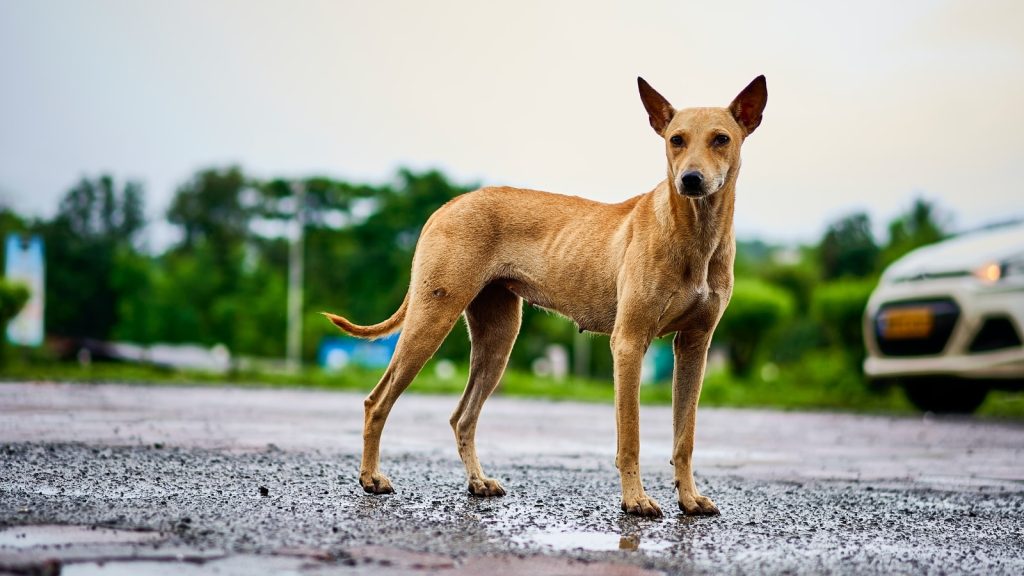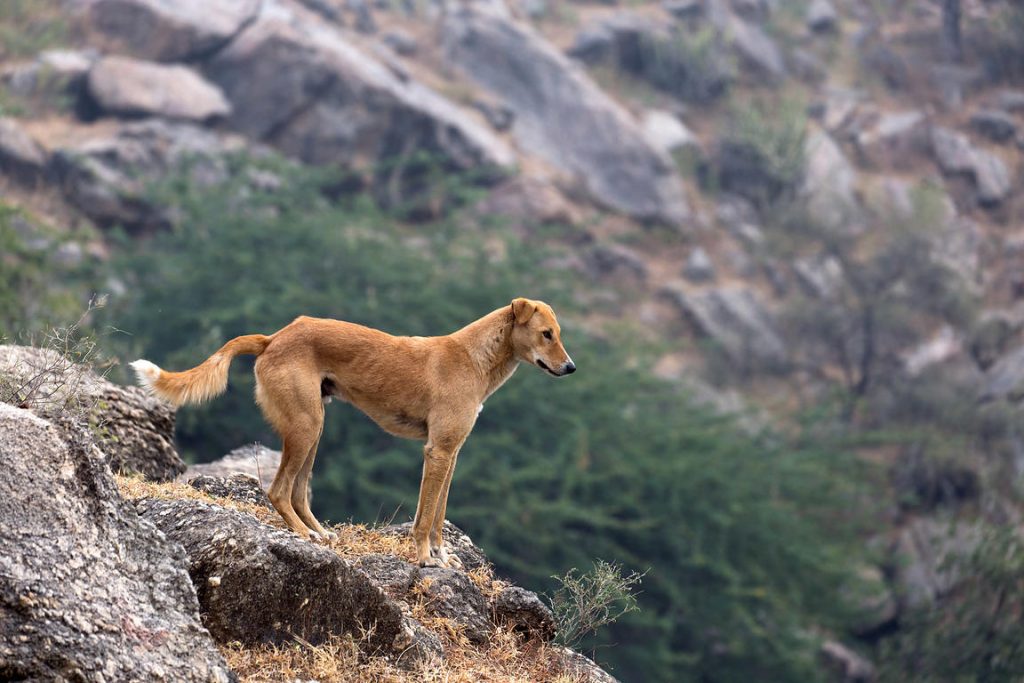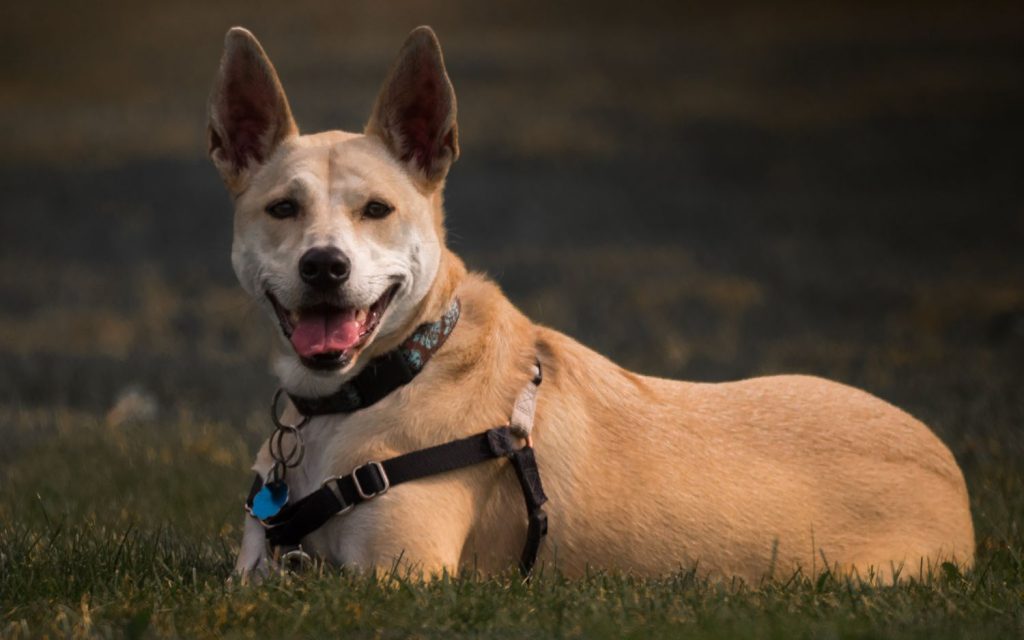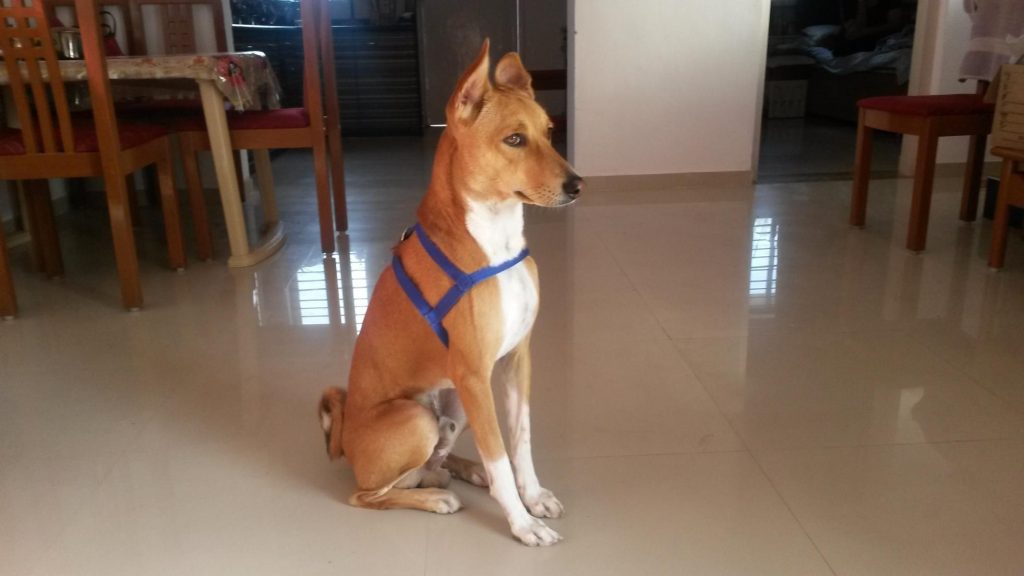Are you considering getting an Indian pariah dog as a pet? If so, you’re in for a treat! These dogs, also known as the Desi or the Indian Native Dog, are a unique and fascinating breed that have been around for centuries. They are highly adaptable, intelligent, and loyal, making them excellent companions for the right owner. However, before bringing one of these dogs into your home, it’s important to learn more about their characteristics, temperament, and care requirements. In this article, we’ll explore all of these aspects in depth so that you can make an informed decision about whether an Indian pariah dog is the right choice for you.
Breed Category: Working
Country of Origin: India
Average Size:50-60 cm
Average Weight:15-25 kg
Average Life Span: 13-15 years
Grooming Requirements: Low
Exercise Requirements:High
History and Origin
The Indian pariah dog, also known as the Indian native dog, is a breed of dog that has been around for thousands of years. It is believed to be one of the oldest breeds of dogs in the world, with its origins dating back to the Indus Valley Civilization, which existed around 3300 BCE.
The Indian pariah dog is a medium-sized dog that is well-adapted to the Indian climate. It has a short, dense coat that comes in a variety of colors, including black, brown, and white. The breed is known for its intelligence, loyalty, and agility, and is often used as a guard dog and for hunting.
The Indian pariah dog is believed to have evolved from the Indian wolf, which is a subspecies of the gray wolf. The breed was originally used by the indigenous people of India for hunting and as a guard dog. Over time, the breed became more domesticated and was used as a companion animal.
The Indian pariah dog is also known as the Pye dog, which is a term used to describe a type of dog that is found throughout Asia and Africa. The term Pye dog is believed to have originated from the Tamil word “pie,” which means “outsider” or “stranger.” This is because the Indian pariah dog was often seen as an outsider in Indian society, as it was not a purebred dog and was often associated with the lower classes.
Despite its long history and importance in Indian culture, the Indian pariah dog is not recognized as an official breed by any major kennel club. This is because the breed is not a purebred dog and has not been selectively bred for specific traits. However, there are efforts underway to promote the breed and to preserve its unique characteristics.
In recent years, the Indian pariah dog has gained popularity as a pet in India and other parts of the world. This is due in part to its intelligence, loyalty, and adaptability. The breed is also known for its good health and longevity, with some dogs living up to 15 years or more.
In conclusion, the Indian pariah dog is a breed of dog that has a long and rich history in India. It is believed to be one of the oldest breeds of dogs in the world, with its origins dating back to the Indus Valley Civilization

Size and Breed Category
#ERROR!
Fur Length and Colour
The fur of the Indian pariah dog is typically short and dense, providing protection from the hot and humid climate of India. The fur is usually a shade of brown or black, with some dogs having white markings on their chest and paws. The texture of the fur is coarse and rough to the touch, which helps to repel dirt and debris. The fur on the tail is longer and bushier than the rest of the body, giving the dog a distinctive appearance. The fur on the ears is also longer and stands upright, adding to the dog’s alert and attentive expression. Overall, the fur of the Indian pariah dog is well-suited to its environment and provides both protection and style.
The colour of the Indian pariah dog’s fur can vary depending on the region and individual dog. Some dogs have a reddish-brown coat, while others have a darker brown or black coat. The fur can also have a brindle pattern, with stripes of different shades of brown or black. The white markings on the chest and paws can be small or large, and some dogs may have white fur on their face as well. The fur is not typically shiny or glossy, but rather has a matte finish. Despite the lack of shine, the fur is still attractive and adds to the dog’s natural beauty. Overall, the colour of the Indian pariah dog’s fur is diverse and unique, reflecting the breed’s adaptability and resilience.
Termperament and Trainability
Indian pariah dogs are known for their independent and self-reliant temperament. They are not overly affectionate or clingy, but they do form strong bonds with their owners. These dogs are highly adaptable and can thrive in a variety of environments, from rural villages to urban cities. They are also known for their intelligence and problem-solving abilities, which can make them challenging to train. However, with patience and consistency, they can learn a variety of commands and tricks. Indian pariah dogs are also known for their alertness and make excellent watchdogs.
When it comes to trainability, Indian pariah dogs can be stubborn and strong-willed. They have a natural instinct to hunt and may be easily distracted by scents or sights. This can make them difficult to train off-leash, and they may require a secure area to run and play. However, with positive reinforcement and reward-based training, they can learn to follow commands and behave appropriately. Indian pariah dogs are also known for their high energy levels and require plenty of exercise and mental stimulation to prevent boredom and destructive behavior. Overall, these dogs are intelligent and adaptable, but may require a patient and experienced owner to bring out their full potential.

Known Health Conditions
Indian pariah dogs are known to be susceptible to a range of health conditions. One of the most common issues is skin problems, such as mange and dermatitis. These conditions can cause intense itching, hair loss, and skin infections. In severe cases, they can lead to scarring and permanent damage to the skin. Indian pariah dogs are also prone to ear infections, which can cause discomfort and hearing loss. These infections are often caused by bacteria or yeast and can be treated with medication. Additionally, Indian pariah dogs may develop dental problems, such as gum disease and tooth decay. Regular dental care, including brushing and professional cleanings, can help prevent these issues.
Another health concern for Indian pariah dogs is hip dysplasia. This condition occurs when the hip joint does not develop properly, leading to pain and mobility issues. It is often hereditary, so it is important to choose a breeder who screens their dogs for hip dysplasia. Indian pariah dogs may also be at risk for eye problems, such as cataracts and glaucoma. These conditions can cause vision loss and may require surgery to treat. Finally, Indian pariah dogs may be prone to obesity, which can lead to a range of health problems, including diabetes and joint pain. A healthy diet and regular exercise can help prevent obesity and keep these dogs in good health.

Openness to Strangers
Indian pariah dogs are known for their friendly and welcoming nature towards strangers. They are often found wandering around the streets of India, and are quick to approach and greet anyone who crosses their path. These dogs are highly sociable and enjoy the company of humans, often seeking out attention and affection from strangers. Despite their independent nature, they are not afraid to approach new people and are always eager to make new friends. Indian pariah dogs are also known for their loyalty and protective instincts, making them excellent guard dogs for families and homes.
In addition to their friendly nature, Indian pariah dogs are also highly adaptable and resilient. They are able to thrive in a variety of environments, from rural villages to bustling cities. These dogs are often seen roaming freely in the streets, and are able to navigate their way through busy crowds and traffic with ease. They are also highly intelligent and resourceful, able to find food and shelter in even the most challenging of circumstances. Despite their tough exterior, Indian pariah dogs are known for their gentle and affectionate personalities, making them a beloved companion for many families in India and beyond.
Playfulness Level
The Indian pariah dog is a highly playful breed that loves to engage in various activities. They are known for their energetic nature and are always up for a game of fetch or a run in the park. These dogs are highly social and love to interact with their owners and other dogs. They are also known for their intelligence and can be trained to perform various tricks and tasks. The Indian pariah dog is a great companion for families with children as they are patient and gentle with kids. They are also highly adaptable and can thrive in both urban and rural environments.
The playful nature of the Indian pariah dog makes them a great choice for people who lead an active lifestyle. They require regular exercise and mental stimulation to keep them happy and healthy. These dogs are also highly curious and love to explore their surroundings. They are known for their loyalty and will always be by their owner’s side. The Indian pariah dog is a great addition to any household and will bring joy and happiness to their owners. They are a unique breed that is highly valued in India and are slowly gaining popularity in other parts of the world.
Suitability as a Pet for Children
Indian pariah dogs, also known as INDogs, have been domesticated for centuries and are known for their loyalty and intelligence. They are highly adaptable and can thrive in a variety of environments, making them suitable for families with children. Their friendly and affectionate nature makes them great companions for kids, and they are also known to be protective of their families. INDogs are generally healthy and low-maintenance, requiring minimal grooming and exercise. However, it is important to note that like all dogs, they require proper training and socialization to ensure they are well-behaved around children.
Exercise Needs
Indian pariah dogs are highly active and require a significant amount of exercise to maintain their physical and mental health. These dogs are known for their agility and endurance, making them ideal for activities such as running, hiking, and playing fetch. A daily exercise routine of at least 60 minutes is recommended for Indian pariah dogs, which can be broken down into multiple sessions throughout the day. It is important to note that these dogs have a high prey drive and may chase after small animals, so it is essential to keep them on a leash or in a secure area during exercise.
In addition to physical exercise, Indian pariah dogs also require mental stimulation to prevent boredom and destructive behavior. Interactive toys, puzzle games, and obedience training are all effective ways to keep these dogs mentally engaged. Socialization is also crucial for Indian pariah dogs, as they can become anxious or aggressive towards strangers if not properly socialized from a young age. Overall, providing a balanced exercise and mental stimulation routine is essential for the health and happiness of Indian pariah dogs.

Suitability for a Multi-Pet Family
Indian pariah dogs have been known to coexist peacefully with other pets in the household. They are social animals and can form strong bonds with other animals, including cats and other dogs. However, as with any animal, it is important to introduce them slowly and carefully to ensure a positive relationship. It is also important to supervise interactions between pets to prevent any potential conflicts. Overall, the Indian pariah dog can make a great addition to a household with other pets.
Housing Requirements
Indian pariah dogs are known for their adaptability and resilience, making them a popular choice for households in India. These dogs require a living space that is comfortable and spacious enough for them to move around freely. A minimum of 10 square meters of living space is recommended for these dogs, with a height of at least 1.5 meters to prevent them from jumping over the fence. It is important to note that Indian pariah dogs are highly active and require regular exercise, so a backyard or a nearby park would be ideal for them to run around and play. Additionally, these dogs are known for their thick fur, which means they can tolerate colder temperatures, but they still require a warm and dry shelter to protect them from harsh weather conditions.
Indian pariah dogs are not picky eaters and can thrive on a diet of rice, vegetables, and meat. However, it is important to ensure that their diet is well-balanced and meets their nutritional requirements. These dogs also require regular grooming to maintain their thick fur and prevent matting. Brushing their fur once a week and bathing them once a month is recommended. Indian pariah dogs are generally healthy and have a lifespan of 13-15 years, but they still require regular check-ups with a veterinarian to ensure their overall health and well-being.

Summary
The Indian pariah dog, also known as the desi dog, is a popular choice for a pet in India due to their adaptability and loyalty. They are often found as strays on the streets and have learned to survive in harsh conditions, making them low maintenance pets. They are also known for their intelligence and ability to learn quickly, making them easy to train. However, due to their independent nature, they may not be suitable for first-time dog owners or those who are looking for a lap dog. Overall, the Indian pariah dog can make a great pet for those who are willing to provide them with the love and attention they deserve.
Indian pariah dog Dog FAQS
Yes, Indian pariah dogs are intelligent and eager to please, making them easy to train with positive reinforcement methods.
Yes, Indian pariah dogs are known to be good with children and make great family pets.
Indian pariah dogs are generally healthy, but they may be prone to skin allergies and hip dysplasia.
Yes, Indian pariah dogs can adapt to apartment living as long as they receive enough exercise and mental stimulation.
Yes, Indian pariah dogs are an active breed and require daily exercise such as walks or runs.
Yes, Indian pariah dogs shed moderately and require regular grooming to maintain their coat.
Indian pariah dogs typically weigh between 15-25 kg and stand 45-60 cm tall at the shoulder.
The cost of owning an Indian pariah dog varies depending on factors such as adoption fees, veterinary care, and food expenses, but it typically ranges from 5000-10000 INR per month.
An Indian pariah dog is a breed of dog that is native to India and is known for its intelligence, loyalty, and adaptability.
The average lifespan of an Indian pariah dog is 13-15 years.
